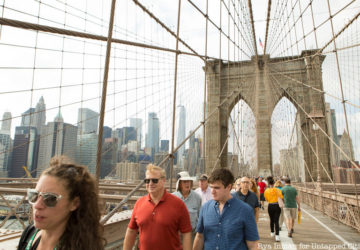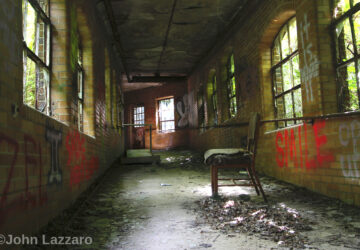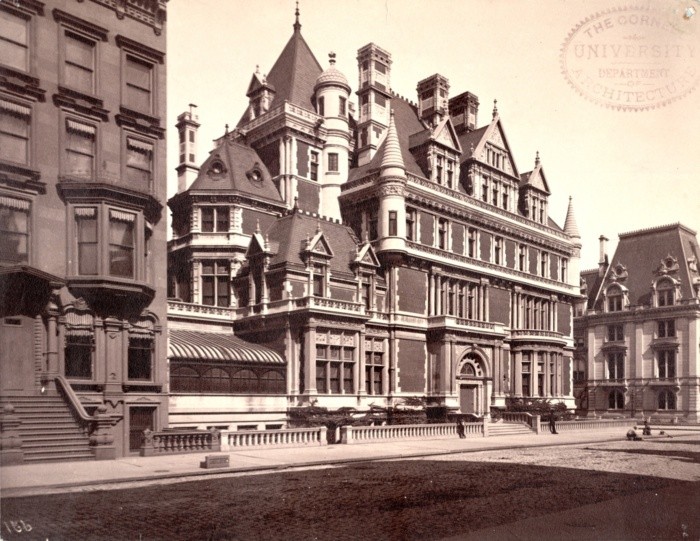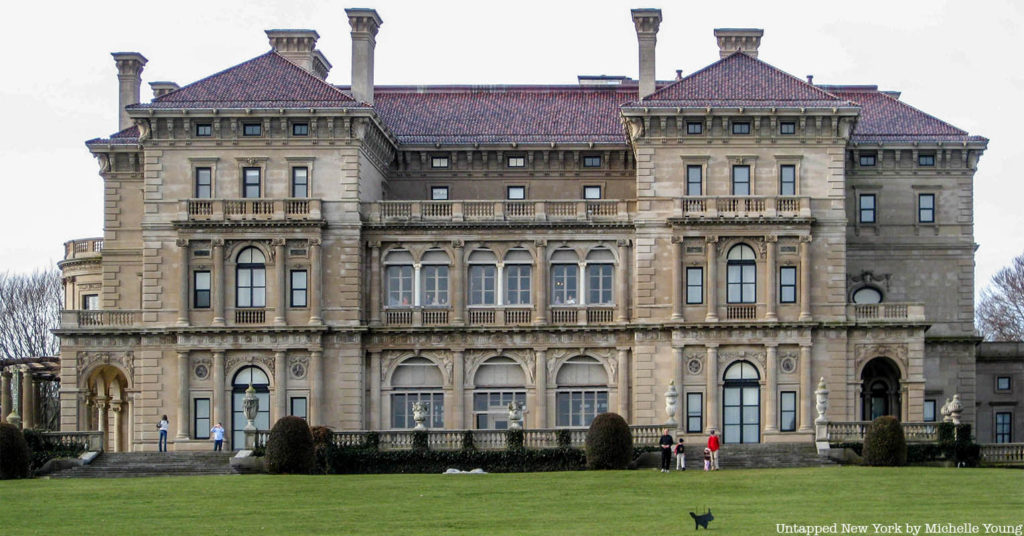
During the Gilded Age, there were just a handful of architects who wealthy families like the Vanderbilts and tycoons like Henry Clay Frick, Andrew Carnegie, and J.P. Morgan called upon to design their opulent mansions and civic buildings. Stanford White, partner at renowned firm McKim, Mead & White, was one of them. Thomas Carrère of Carrère & Hastings was another. But the first and most influential of all was Richard Morris Hunt, the father of Beaux-Arts architecture in the United States and the man who earned the nickname “the Dean of American architecture.”
Born in 1827 in Brattleboro, Vermont, Richard Morris Hunt was the first American to study at the École des Beaux-Arts in Paris—the leading architecture school at the time. Until the Massachusetts Institute of Technology established its architecture school in 1868, there were no formal architecture schools in the United States. Those who wanted to work in the profession either got hands-on training through apprenticeships or studied in Europe, often at the École des Beaux-Arts. During Hunt’s time in Paris, he served as inspector of works on the buildings connected to the Tuileries and the Louvre and designed the Pavillon de la Bibliothèque opposite the Palais Royal.
When Richard Morris Hunt returned to the U.S. in 1855, he worked on an extension of the Capitol in Washington D.C., then designed the Lenox Library, which was destroyed to make way for Henry Clay Frick’s mansion on Fifth Avenue. A number of his most noteworthy buildings were destroyed, including the mansions of William K. Vanderbilt, John Jacob Astor, and Henry G. Marquand. Luckily, there are a few structures that remain in New York City and Newport, Rhode Island, as well as the Biltmore Estate in Ashville, North Carolina.
“It’s hard to overstate the impact Hunt had on architecture in America,” Phillip James Dodd writes in An American Renaissance: Beaux-Arts Architecture in New York City. “It was not just the unwavering sense of professionalism that he brought back with him from Paris, but also a new design aesthetic that integrated architecture, sculpture, and artisanship that would help define the American Renaissance. By referencing an eclectic mix of vernacular and classical European traditions, Hunt developed a unique interpretation of its architecture that was an immediate hit with a New York elite looking to flaunt its newly acquired wealth.”
In fact, Hunt was so influential that after his death, a monument designed by Bruce Price with sculptures by Daniel Chester French was dedicated to him at East 70th Street and Fifth Avenue. Read on to learn about the five remaining structures designed by Richard Morris Hunt that you can still see in New York and Newport and join our tour of the Gilded Age mansions of Fifth Avenue to learn more about this trailblazing architect and founder of the American Institute of Architects.
1. The Metropolitan Museum of Art
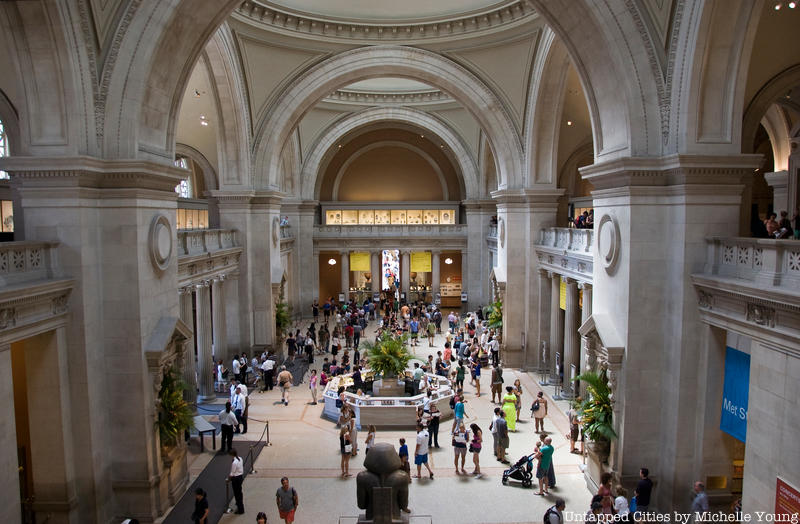
Though you wouldn’t necessarily know just by looking at it, the Metropolitan Museum of Art was not built all at once but was expanded several times over the course of its history. When wealthy attorney John Jay and his friends decided to create a museum for New York City that would rival the Louvre, it was originally housed in a modest brownstone on Fifth Avenue. Incorporated in 1870, the Metropolitan Museum of Art quickly outgrew its home and relocated to 14th Street before the trustees commissioned a purpose-built structure to house it. The City agreed to fund the museum’s construction and deeded a plot of land set within Central Park. The Department of Parks then appointed the park’s architect Calvert Vaux to design the building.
Vaux’s Victorian Gothic design—which you can see glimpses of in the Robert Lehman wing—was highly criticized and, moreover, was too small to keep up with the museum’s rapid growth. The museum actually got an addition by Theodore Weston before Richard Morris Hunt was finally brought on to expand it again.
Hunt designed the monumental façade and the Great Hall inside, drawing inspiration from ancient Roman architecture, in particular the Baths of Caracalla in Rome. He commissioned his frequent collaborator Karl Bitter, an Austro-American sculptor, to create 31 sculptures for the façade, though Bitter’s ambitious sculpture program was left unfinished and Hunt actually died before construction began. His plans were entrusted to his son Richard Howland Hunt, who carried them out faithfully under the supervision of the more experienced architect George B. Post.

